Post-Accident Testing
In the wake of an accident, it's often the post-accident drug tests that turn out to be the wisest financial decision we could make.
Key Insights:
- To maintain a safe work environment.
- By conducting post-accident drug tests, companies can not only ensure a safe work environment but also potentially save thousands of dollars in the long run. The financial benefits of drug testing after an accident are significant, as the results can determine liability and help prevent future incidents. This is especially important for DOT-compliant drug and alcohol testing programs, as well as for companies participating in State Drug-Free Workplace Programs. Investing in post-accident testing is not only a smart financial decision but also a crucial step in maintaining a culture of safety and accountability in the workplace.
- DOT-compliant drug and alcohol testing programs are crucial for ensuring the safety and reliability of the transportation industry. These regulations aim to protect both operators and the public by preventing accidents caused by impairment.
- As a mandatory component of State Drug-Free Workplace Program post-accident testing plays a key role in upholding workplace safety and accountability.
After an accident, it's essential to assess if drugs or alcohol played a role, given the potential for harm or property damage. Setting clear guidelines for when and how these tests are conducted ensures accountability and transparency in the process. Employers often set criteria for testing, such as in cases of fatalities, injuries needing medical evacuation, significant property or vehicle damage, or police citations, to ensure a safe and responsible workplace. While post-accident testing can confirm drug use, a positive result doesn't directly link drug use to the cause of the accident. It's wise for employers to prevent employees involved in accidents from returning to work until after the testing process is complete. Employers should establish clear timelines for post-accident testing to ensure the results are meaningful, recognizing that substances linger in the system for different durations, often making testing within 12 hours advisable. Moreover, the concept of "post-incident" testing is adopted by some, extending the criteria to situations where accidents or injuries were narrowly avoided.
DOT Programs are required by regulation. Through the lens of Workers' Compensation, a Post-Accident Drug Testing (PADT) initiative stands as a key element of an all-encompassing drug-free workplace strategy. This testing enables both employers and insurers to challenge the validity of an injured worker's claim. To successfully contest a Workers' Compensation claim, an employer generally needs to prove two key points: firstly, that the employee was under the influence at the time of the injury, and secondly, that this intoxication played a role in causing the incident.
It's clear that challenging a workers' compensation claim is never guaranteed and often requires judicial or jury evaluation. Employers must commit fully to maintaining a safe, drug-free environment, which includes comprehensive drug and alcohol testing protocols.
To effectively employ the intoxication defense, employers can follow these steps:
1. Implement and communicate a clear drug-testing policy.
2. Discourage alcohol consumption in the workplace.
3. Conduct immediate drug testing after any accident.
4. Obtain a written account from the injured employee post-incident.
5. Collect written observations from colleagues.
6. Ensure drug tests are conducted by a credible provider.
7. Authorize immediate care for injured employees, regardless of drug test outcomes.
8. Provide training and education on this policy
Successfully establishing intoxication involves key components: a drug-free workplace policy in compliance with regulations, a drug test administered correctly, and a confirmed positive test result.

.png?width=500&height=500&name=Blue%20and%20White%20Classic%20Shield%20Financial%20with%20Star%20Logo%20Design%20(1).png)


